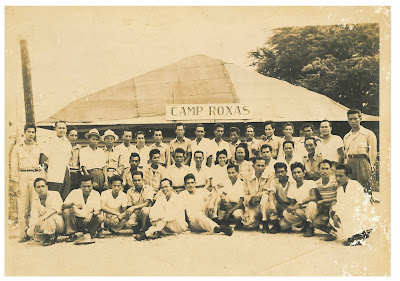The surname Rojas does not appear in the older Guam censuses of the 1700s. So we can assume, then, that the first Rojas in Guam came in the last decades of the 1700s and perhaps in the early 1800s. He could have come from Spain, Latin America or the Philippines or somewhere else. Rojas is found mainly in southern Spain (Andalucia) where larger numbers of Spaniards left the mother country for the Spanish colonies overseas.
The surname is Spanish, though some Portuguese also have it.
The prevailing theory about the origin of the name is that it is toponymic, named after a geographical location. There are two towns in Spain named Rojas. Or, a family could have been called Rojas because they lived near a place with red features (soil, terrain, etc.) Rojas is related to the Spanish word rojo, meaning red. Rojas is the feminine plural form of rojo.
In the 1897 Census of Guam and Rota, we have the following male heads of families named Rojas.
ROJAS-DEMAPAN
Two men, possibly brothers, are Rojas with the middle name (maternal) Demapan.
Jose Demapan Rojas, born around 1830, was married to Narcisa Diaz.
Another Rojas, born around 1837, also has Demapan for a middle name : Cecilio Demapan Rojas, married to Josefa de los Reyes.
Then we have a younger Rojas, Antonio, born around 1867, who has the middle name Diaz. It is possible, then, that Antonio is the son of Jose, whose wife was a Diaz.
Antonio, by the way, married Ana Cruz Atoigue.
ANOTHER ROJAS
Then we have a widower. Mariano Rojas, born around 1841. Unfortunately, we do not know (yet) his middle name. However, his birth year of 1841 does make him a possible brother of Jose and Cecilio. If he was, then he would have been a Demapan Rojas as well, and then we have the good possibility that one Rojas came to Guam in the 1820s and married a woman from the Demapan family.
What seems nearly clear is that Jose, Cecilio and Mariano, if not brothers, could be cousins, grandchildren of a single Rojas male who came to Guam at the end of the 1700s or beginning of the 1800s. I wish I could tell the family the native land of their ancestor.
ROXAS
In Manila there is the famous Roxas Boulevard that goes north-south alongside Manila Bay, passing the American Embassy down to Pasay City.
In times past, X and J had the same sound in Spanish. Think of Mexico and Texas. In Spanish, one says the X like our English H.
That Boulevard is named after former Philippine President Manuel Roxas.
Which leads us to this....
CAMP ROXAS
 |
| FB camp roxas |
After WW2, when more labor was needed for the military build-up on Guam than the island was able to supply, the US military brought in many Filipino workers. Camp Roxas in Agat was their home, and is a part of our island's history. Visit www.camproxas.com

Si yu'us ma'ase Pale' Eric. :D
ReplyDelete